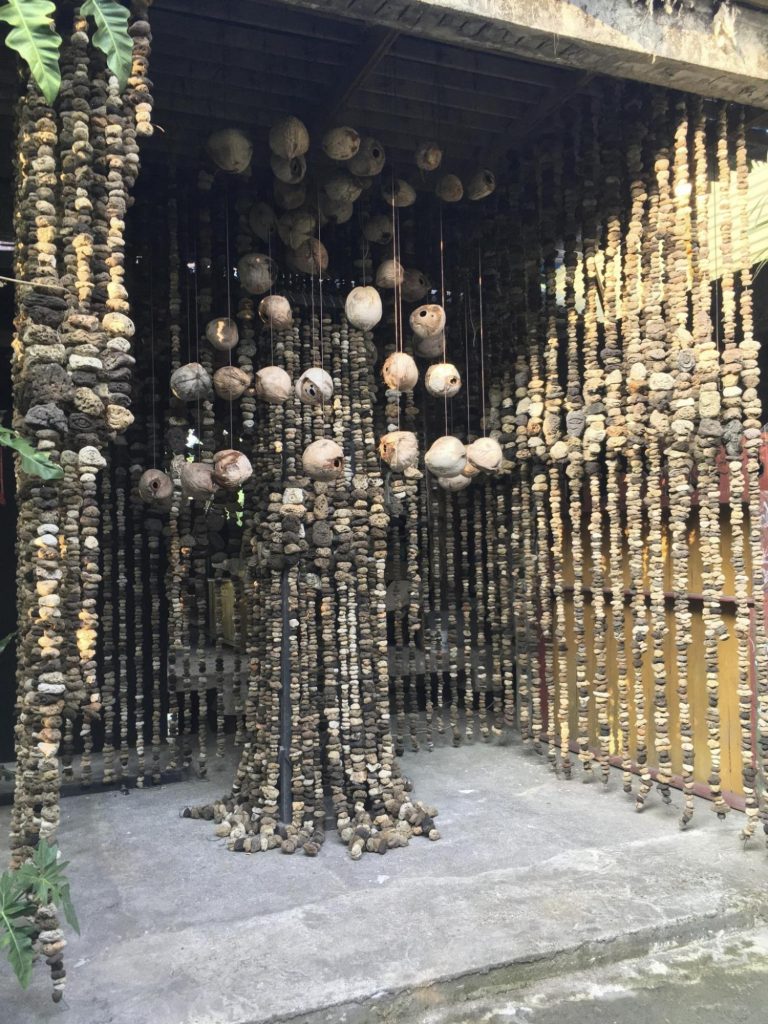We acknowledge the Traditional Owners of the land on which the Queensland Art Gallery | Gallery of Modern Art stands and recognise the creative contribution First Australians make to the art and culture of this country.

I Made Djirna / Indonesia b.1957 / Kita 2021 (work in development, artist studio, Kedewatan, Bali) / Strings of pumice stone, carved stone and coconut shells / Site-specific installation / Commissioned for APT10 / Courtesy: The artist / © I Made Djirna
I Made DjirnaKita 2021
Not Currently on Display
Kita is an installation built of pumice stone, rock, terracotta and dried coconut husks. Hundreds of rocks and stones are strung together to create curtain-like assemblages, and monumental towers of material fall to the ground with faces and figures emerging between natural forms.
For I Made Djirna, the many strings that link the hundreds of stones represent an underlying concept of togetherness and unity in the construction of the self. There are two different words in Bahasa Indonesian that loosely translate as ‘we’ — kita and kami — both of which imply ‘togetherness’. Kami is used as a possessive pronoun which distinguishes one group from another (as in ‘us’ and ‘them’), while kita is used in an inclusive manner. Djirna’s Kita evokes his wholistic and interconnected view of the materials and meaning in his work.1
Djirna collects pumice stones and coconut shells (as well as other natural objects) from shores and forests in Bali and different places in Indonesia and sculpts figures in terracotta. The history and transformative qualities inherent in such materials — such as the volcanic nature of pumice stone and life-preserving quality of coconut as a carrier of water — along with the fact they are found in other parts of the world, are important considerations for Djirna. Kita operates as
an invitation from the artist to see a togetherness that allows each member of any society, individually or in groups, to perceive themselves in a context of mutualism, a togetherness that develops from one to another.2
Endnotes:
1 I Made Djirna, Kita artist’s statement, trans. Army, May 2021.
2 Artist’s statement.
I Made Djirna is one of Bali’s most respected practising artists. He is a painter, sculptor, collector and visionary — there remains little distinction between his art and the life he inhabits.
Djirna’s studio in Kedewatan, central Bali, is a sprawling other-worldly space where a series of open buildings and courtyards have been transformed into immersive encounters with collected materials, spontaneous installations and haunting paintings. The artist amasses tonnes of materials in this space for his projects, in which reclaimed and repurposed objects are treated with a deep consideration of their place in time, nature and use.
Djirna’s approach blends the experience and textures of indoor, outdoor, private, shared and ritual spaces, resonating with the shared living, working and spiritual environments particular to family-living in Bali and the presence of nature on the island.